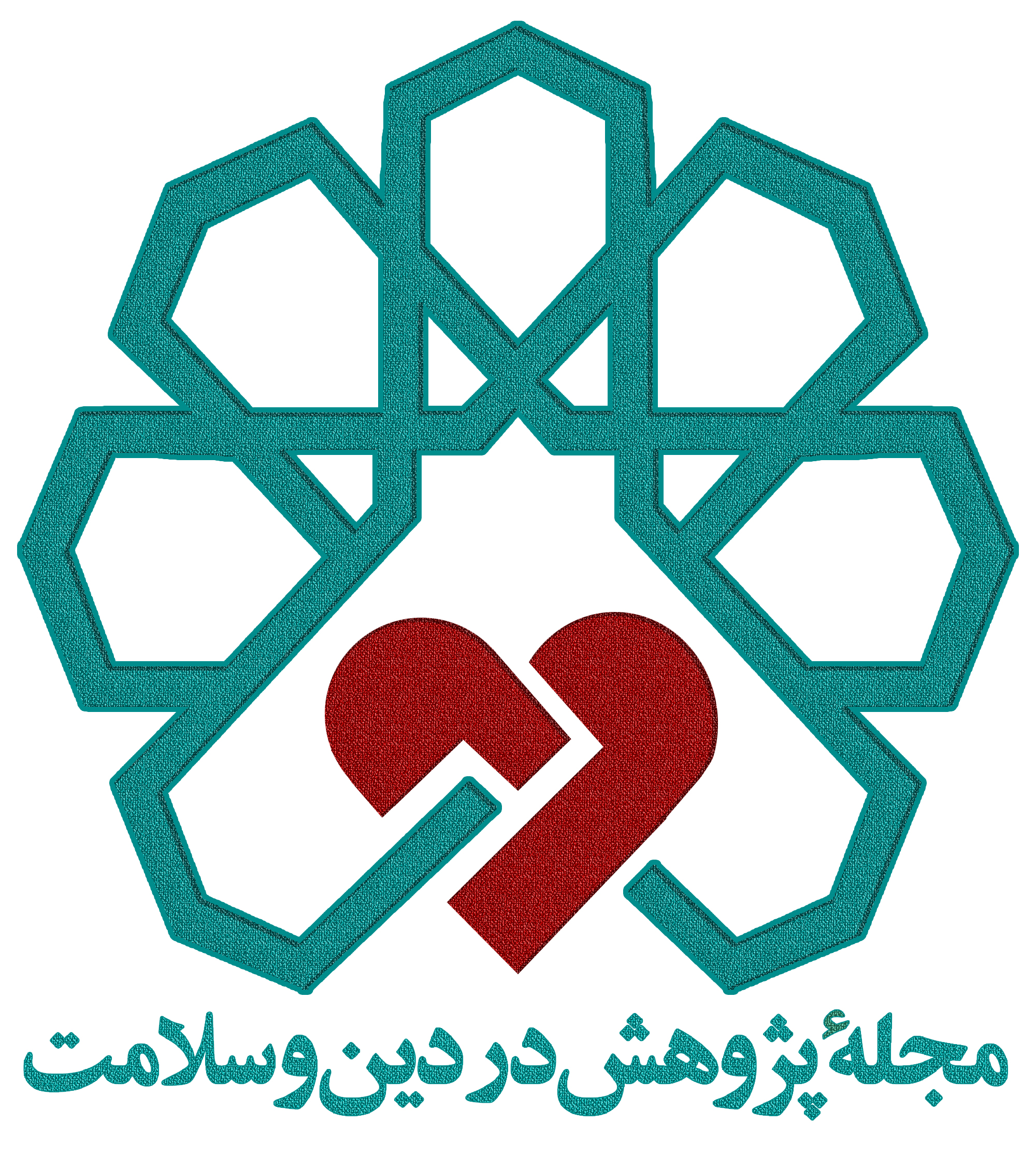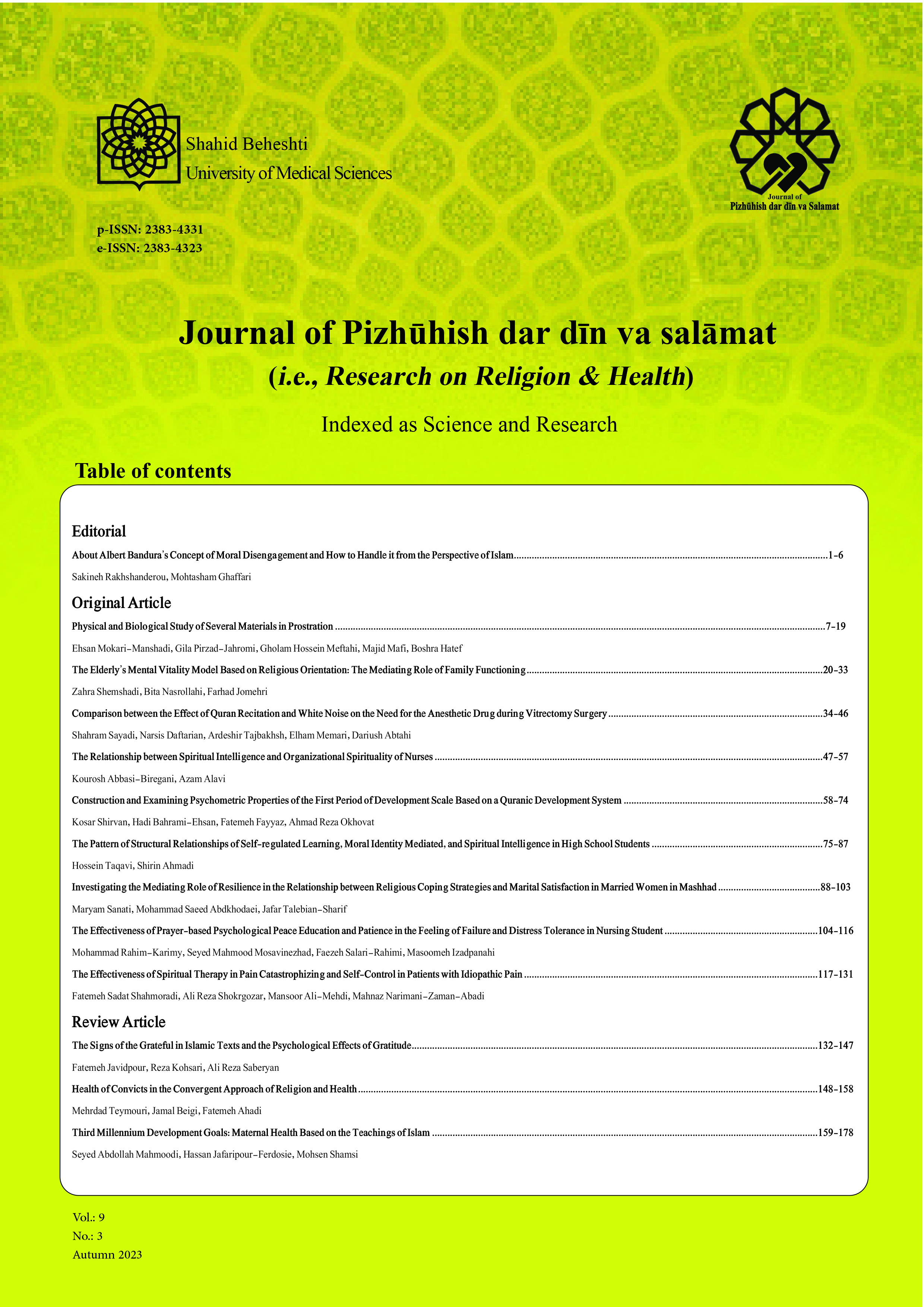About Albert Bandura’s Concept of Moral Disengagement and How to Handle it from the Perspective of Islam
Journal of Pizhūhish dar dīn va Salāmat (i.e., Research on Religion & Health),
Vol. 9 No. 3 (2023),
15 Aban 2023,
Page 1-6
According to Albert Bandura's Social Learning Theory, which was later renamed as Social Cognitive Theory, a major part of human learning happens through observational learning/modeling, and based on this, people's moral standards are formed in interaction with the same social models (1, 2). Therefore, for self-regulation, people tend to behave in accordance with the behavioral norms of the society and avoid opposing the existing moral standards so as not to suffer self-deprecation and self-blame and self-condemnation. But in some cases, it is observed that people are in situations where they behave against their accepted values and norms, and at the same time, they do not blame themselves. Albert Bandura introduces this process with the concept of Moral Disengagement (3). In this conceptualization, he identified eight mechanisms that people use to prevent self-humiliation caused by committing a behavior that does not conform to moral standards, in the form of Moral Justification, Euphemistic Labeling, Advantageous Comparison, Displacement of Responsibility, Diffusion of Responsibility, Disregard or Distortion of Consequences, Dehumanization and Attribution of Blame (2, 4-6). It should be noted that Albert Bandura's theory of Moral Disengagement does not in any way mean his confirmation of moral disengagement and is only a scientific theory in the field of moral psychology to explain individuals’ internal and cognitive processes in relation to moral standards.
Today, this theory and individuals’ lack of moral to ethical standards and models adherence in the society are discussed and its roots are investigated in various research fields such as child and adolescent growth stages, organizational behavior, criminology, military psychology, sports psychology and public health. Accordingly, the findings of these studies can be very beneficial to the cultural and behavioral experts in the society (2, 7, 8).
Obviously, non-adherence to moral standards among the members of a society exposes the moral life of that society to collapse, and this is not an issue that can be easily ignored, especially considering the life-giving teachings of the Islamic religion, which puts a high emphasis on adherence to moral issues. Therefore, we see that in the discussion of Enjoining
Good and Forbidding Evil, one of the duties of every Muslim is to fight against the spread of immoral behavior in society, one of the main causes of which is individuals’ moral disengagement. In other words, this divine duty, as a key strategy that is socially deterrent, can play a significant role in preventing many mechanisms of lack of moral commitment, besides its internal cleansing dimensions The repeated emphasis in the Holy Quran and religious teachings on Enjoining Good and Forbidding Evil show the importance that Islam attaches to making the social environment healthy and feeling responsible, benevolent and philanthropic and fighting corruption and sin in society. On the other hand, Imam Hussain's (pbuh) unique uprising and movement, according to his words, was for the implementation of this divine duty in the society, and in the present time, reviving the duty of Enjoining Good and Forbidding Evil will be of great help in making the social environment healthy (9).
In the end, it is hoped that more specialized studies and analyses are conducted in academic circles on the process of moral disengagement in various subjects and areas, and the government authorities have a more serious concern by relying on scientific evidence in order to plan suitable interventions in this field.

